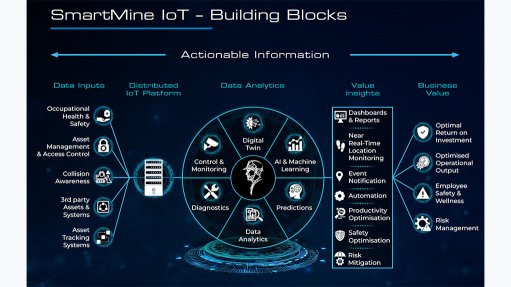The evolution of cybersecurity in the construction industry
This article has been supplied.
By: Morag Evans - CEO of Databuild
The increasing connectedness of the world means cyber threats have become a daily occurrence. No sector is safe as cybercriminals look to exploit any weakness to compromise infrastructure and systems, and steal data. Organisations in the construction industry, often seen as a traditional sector, must navigate securing their environments or risk significant financial and reputational damage.
Historically, construction companies focused on physical safety. From ensuring that structures were sound, and workers protected to having projects comply with strict regulatory standards. However, the digital age has introduced a new dimension of risk that many in the industry are only now starting to fully appreciate. Cybersecurity incidents, once the domain of tech firms and financial services providers, have increasingly targeted the construction sector. Cybercriminals recognise the valuable data, large sums of money and critical infrastructure these companies handle.
In recent years, there has been a rise in cyberattacks on construction firms globally. These incidents have ranged from ransomware attacks that cripple operations to sophisticated scams that siphon off large sums of money. The frequency and impact of these attacks highlight that cybersecurity has become just as important as physical safety in the construction industry.
Why construction is vulnerable
Several factors make the construction industry an attractive target for cybercriminals. Firstly, construction projects often involve an extensive network of contractors, subcontractors, suppliers, and clients. The cybersecurity maturity of each of these businesses can be massively different, resulting in multiple potential entry points for attackers.
Because the construction industry, like virtually every other sector in the world, is reliant on emails, companies are susceptible to phishing and other cyberattacks. Sensitive information, including designs for critical infrastructure or financial details of projects, is often shared electronically and on numerous devices. This makes these businesses a valuable target for cybercriminals.
Building stronger defences
To address these vulnerabilities, construction companies must prioritise cybersecurity alongside traditional safety measures. This begins with awareness. Management must understand how important it is to protect the digital assets of a construction project. To do so requires the adoption of cybersecurity protocols, training employees on recognising threats, and investing in secure digital infrastructure.
One effective strategy is to adopt a proactive approach to cybersecurity. This is often described as ‘the three Ps’ - prevention, protection, and preparation. Prevention involves taking steps to reduce the likelihood of an attack. For example, using secure communication channels and regularly updating software. Protection centres on safeguarding systems through firewalls, encryption, and other security measures. Finally, preparation entails making sure that companies have a response plan in the event of an attack. This can help minimise damage and ensure a faster recovery.
Looking ahead
Cybersecurity must become an integral part of the construction sector’s move to embrace digital transformation. The consequences of a cyberattack can be severe. Financial and reputational damage could be significant as could the impact on project delivery. By recognising the importance of cybersecurity and taking steps to mitigate risks, construction companies can protect their projects, clients, and themselves from the growing threat of cybercrime.
In the end, just as the industry has adapted to new building materials and construction techniques over the years, so too must it adapt to the realities of the digital age. By doing so, these businesses can build not only the physical infrastructure of tomorrow but also a secure and resilient foundation for the future.
Article Enquiry
Email Article
Save Article
Feedback
To advertise email advertising@creamermedia.co.za or click here
Comments
Press Office
Announcements
What's On
Subscribe to improve your user experience...
Option 1 (equivalent of R125 a month):
Receive a weekly copy of Creamer Media's Engineering News & Mining Weekly magazine
(print copy for those in South Africa and e-magazine for those outside of South Africa)
Receive daily email newsletters
Access to full search results
Access archive of magazine back copies
Access to Projects in Progress
Access to ONE Research Report of your choice in PDF format
Option 2 (equivalent of R375 a month):
All benefits from Option 1
PLUS
Access to Creamer Media's Research Channel Africa for ALL Research Reports, in PDF format, on various industrial and mining sectors
including Electricity; Water; Energy Transition; Hydrogen; Roads, Rail and Ports; Coal; Gold; Platinum; Battery Metals; etc.
Already a subscriber?
Forgotten your password?
Receive weekly copy of Creamer Media's Engineering News & Mining Weekly magazine (print copy for those in South Africa and e-magazine for those outside of South Africa)
➕
Recieve daily email newsletters
➕
Access to full search results
➕
Access archive of magazine back copies
➕
Access to Projects in Progress
➕
Access to ONE Research Report of your choice in PDF format
RESEARCH CHANNEL AFRICA
R4500 (equivalent of R375 a month)
SUBSCRIBEAll benefits from Option 1
➕
Access to Creamer Media's Research Channel Africa for ALL Research Reports on various industrial and mining sectors, in PDF format, including on:
Electricity
➕
Water
➕
Energy Transition
➕
Hydrogen
➕
Roads, Rail and Ports
➕
Coal
➕
Gold
➕
Platinum
➕
Battery Metals
➕
etc.
Receive all benefits from Option 1 or Option 2 delivered to numerous people at your company
➕
Multiple User names and Passwords for simultaneous log-ins
➕
Intranet integration access to all in your organisation




















